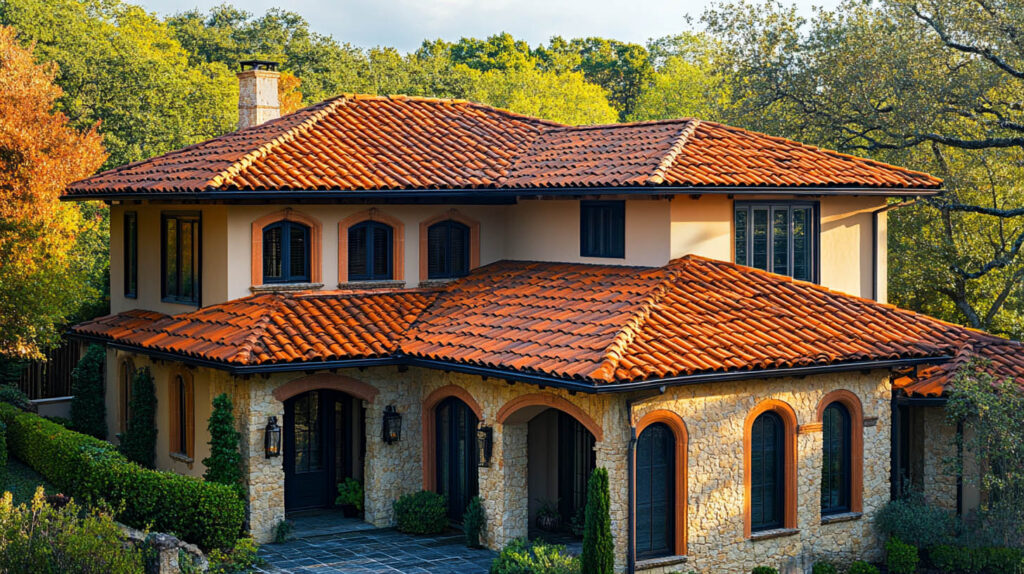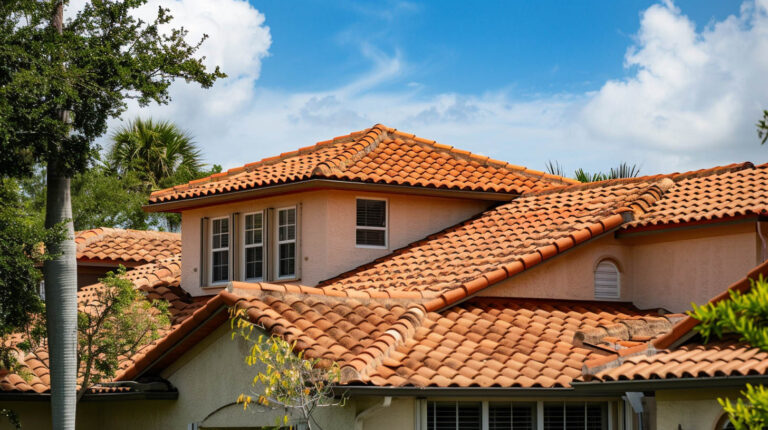
Blog
How Roof Color Impacts Your Home’s Energy Efficiency
When it comes to energy efficiency, the color of your roof can play a significant role. Many homeowners may not realize that their choice of roof color can affect indoor temperatures and overall energy consumption. At Avenue Roofing, we help guide homeowners through the process of selecting roof colors that balance aesthetics with energy savings.

How Roof Color Affects Heat Absorption
Light vs. Dark Roof Colors
The principle behind how roof color affects your home’s energy efficiency is simple: light colors reflect sunlight, while dark colors absorb it. This difference in heat absorption can affect how hard your air conditioning needs to work, particularly during hot Florida summers.
For example, lighter roof colors such as white or light grey reflect more sunlight, keeping the roof surface cooler. This means your home absorbs less heat, reducing the strain on your cooling system and lowering your energy bills. In contrast, darker roof colors, like black or dark brown, absorb more heat, which can increase the temperature of your attic and upper floors.
Unique Fact: Dark-colored roofs can be 10-15 degrees hotter than light-colored roofs, which significantly impacts cooling costs.
Choosing the Best Roof Colors for Efficiency
1. Reflective, Cool Roof Colors
If energy efficiency is a priority, lighter colors are typically the best option. These shades reflect more sunlight, keeping your home cooler. In warmer climates, this can lead to substantial savings on air conditioning costs. Some of the most popular energy-efficient roof colors include:
- White (cool roofing)
- Light grey
- Light tan
2. Heat-Absorbing Roof Colors
For homes in colder climates or regions with cool winters, darker colors might be more desirable. These shades absorb heat, which can help keep your home warmer during the winter months. However, in hot climates like Florida, darker roof colors can increase cooling costs. Popular heat-absorbing roof colors include:
- Black
- Dark grey
- Dark brown
Evaluating Roof Materials for Energy Efficiency
In addition to color, the type of roofing material you choose also impacts energy efficiency. Some materials, such as metal and tile, are naturally more energy-efficient because they offer better insulation or reflectivity. When selecting roofing materials, it’s important to check their reflectivity ratings, which measure how well they reflect sunlight rather than absorb it. A reflectivity rating of 65% or higher is generally considered ideal for energy efficiency.
Additional Ways to Improve Roof Efficiency
Beyond color and material, there are several other strategies homeowners can employ to boost roof energy efficiency:
- Green Roofing: Installing vegetation like moss or grass on flat roof sections provides insulation and reduces heat absorption.
- Skylights: Adding skylights allows natural light to enter the home, reducing the need for artificial lighting during the day and lowering electricity bills.
- Solar Panels: Installing solar panels can help harness sunlight for energy, reducing your reliance on traditional power sources.
Conclusion
Choosing the right roof color is about more than aesthetics—it can significantly impact your home’s energy efficiency and your monthly energy bills. In Florida’s warm climate, lighter colors and reflective materials are ideal for keeping homes cool. At Avenue Roofing, we specialize in helping homeowners find the perfect balance between design and energy savings.
FAQs
1. What roof colors are best for hot climates?
Lighter colors like white, light grey, and light tan are ideal for reflecting heat and keeping homes cooler in warm climates.
2. Can darker roof colors save energy in colder regions?
Yes, darker colors absorb more heat, which can be beneficial in regions with cold winters, helping to keep homes warmer.
3. How much can roof color affect energy bills?
The right roof color can reduce cooling costs by reflecting more sunlight, which helps maintain lower indoor temperatures and reduces air conditioning usage.
4. What is a reflectivity rating?
A reflectivity rating measures how well a roofing material reflects sunlight. A higher rating indicates better energy efficiency.
5. Are there eco-friendly roofing options?
Yes, options like green roofing and solar panels can further improve energy efficiency and provide sustainable solutions for homeowners.
For essential steps to protect your roof after hail damage, click here.



